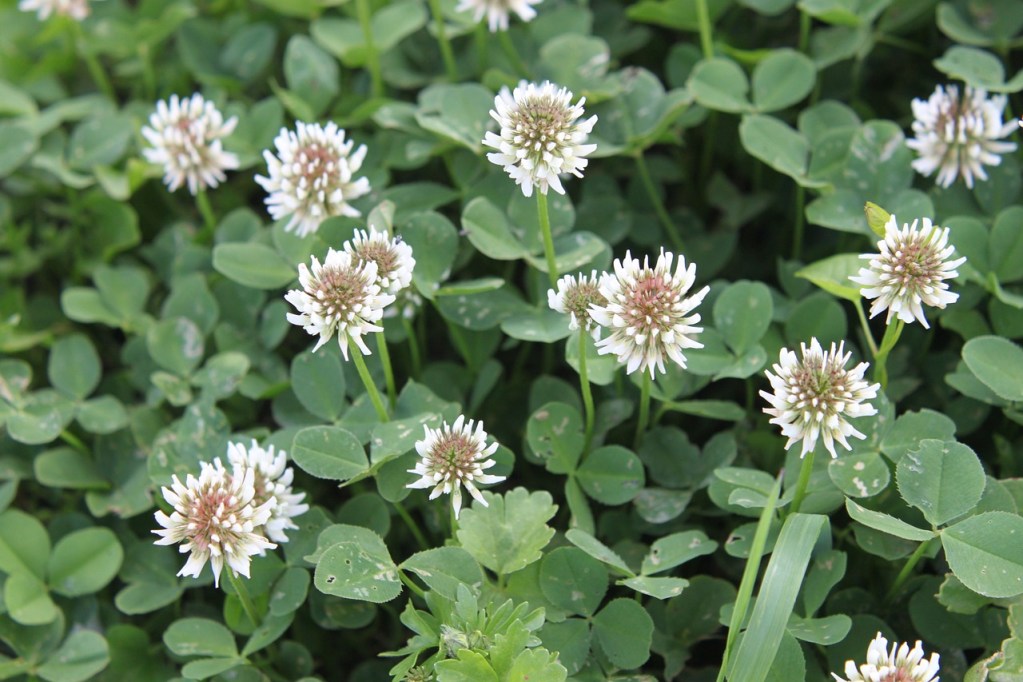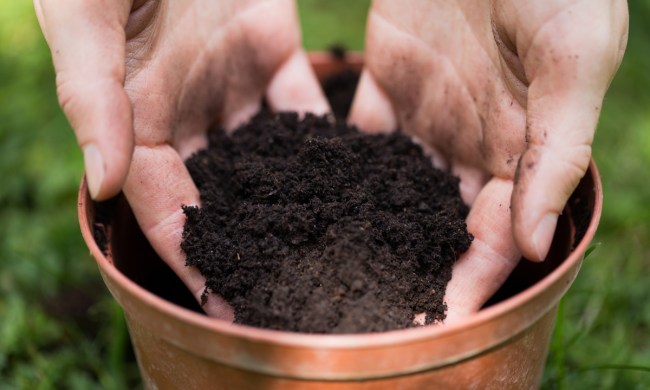
The classic grass lawn has a certain appeal to it, but it isn’t for everyone. If you’re looking for something more sustainable, eco-friendly, or just more interesting than an all-grass lawn, you might be considering a clover lawn. We’ll help you decide if s clover lawn id right for you, or if your lawn is better suited to grass or a mix of grass and clover. No matter your reason for being interested in clover lawns, we’ll answer as many of your questions as we can in this handy guide to clover lawn care.
What are the benefits of clover lawns?

Clover lawns have benefits for you, your local ecosystem, and your soil. Clovers are nitrogen-fixing plants, meaning they add nitrogen back to the soil overtime, which is good news if you ever decide to plant something else in your lawn. Clover is also easier to plant and maintain than grass. It needs less mowing, fertilizing, and watering than most types of grass.
Clover flowers attract pollinators, which is great for your garden and the other plants in your area. Clover is generally tough enough to outcompete weeds, but it can also coexist with a number of small groundcover plants, including deadnettle, wood sorrel, and chickweed. These plants might be called weeds, but they don’t have to be. Their flowers are also beneficial for pollinators, and they don’t stick out as much in a clover lawn as they would in a grass lawn. This means less pressure to get rid of them, which is great for your local ecosystem. Increased biodiversity (having multiple types of plants in one area) improves the overall health of your lawn and area.
Do clover lawns have drawbacks?

While clover lawns have plenty of benefits, they aren’t perfect. Their flowers are great for pollinators, but some pollinators, particularly bees and wasps, may not be great for you. If you or a loved one have a bee allergy or phobia, you have young children who enjoy playing outdoors, or you have pets, then clover lawns may not be a good fit for you.
There are a few other drawbacks as well. Clover is fairly drought tolerant, but it isn’t the most drought-tolerant lawn option. Foot traffic can also more easily damage it than some types of grass. Another downside is more subjective than the others – the aesthetic. Some homeowners find clover lawns less visually appealing than a traditional grass lawn. While some of this comes down to the perception of clover as a weed, some of it is also attributed to clover lawns looking less neat and uniform.
Can you mix clover and grass?

Yes, you can grow both clover and grass as your lawn. You could even add other low-lying ground covers into the mix if you prefer. Having multiple plant types is healthier and easier to maintain than trying to keep your lawn strictly one plant, and mixing plants helps offset the downsides of one plant with the benefits of another.
If you already have a single-plant lawn, you can simply mix seeds of your other plant choices with the grass seed next time you seed your lawn. Remember that you won’t need quite as much grass seed as you normally would. While a 50/50 split might seem intuitive, keep in mind that it’s your lawn and you can adjust the ratio as much as you’d like. If you want your lawn to be mostly clover with a little grass, or vice versa, then simply change the proportions of your seed mix.
What type of clover is best for clover lawns?

Dutch white clover and microclover are the most common types of clover used for lawns, because of their hardiness and availability. Red clover is less commonly used, but is still an option if you find the larger red and pink flowers more appealing. A less common option that might interest some eco-conscious gardeners is native clover species.
Dutch white clover, microclover, and red clover are not native to the U.S., although they have been here for quite a while. Native clover species are typically rare or even endangered, which can make it tricky to acquire seeds. If you’re up for a challenge and interested in native plants, then mixing some native clovers into your lawn is a great idea. If you have a large space to cover, or just don’t have the resources to invest in tracking down native clover seeds, then Dutch white clover or microclover is the way to go.
Clover lawns may not be perfect, but they can be pretty great. If you don’t have any problems with bees and enjoy the aesthetic, then a clover lawn or a mixed lawn that includes clover might be a great fit. If you’d rather not grow a clover lawn, then you can get some of the same benefits by planting native grass species or other native ground covers. Of course, you can also grow a classic grass lawn and focus on your flower garden instead.



